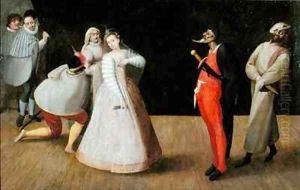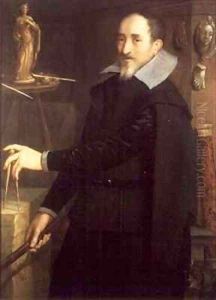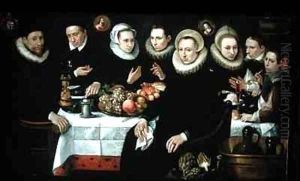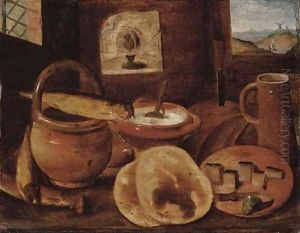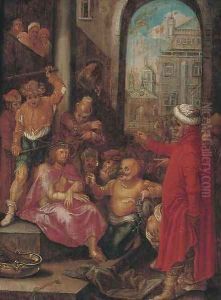Hieronymus Francken Paintings
Hieronymus Francken I was a Flemish painter born in Herentals, a city in the Duchy of Brabant (now in Belgium) around 1540. He belonged to the Francken family, a dynasty of artists that played a significant role in the development of Flemish art during the 16th and 17th centuries. His brothers, Frans Francken I and Ambrosius Francken I, along with his son Hieronymus Francken II, were also notable painters of their time.
Hieronymus was the son of Nicholas Francken, a painter who had moved from Herentals to Antwerp. There, Hieronymus became a pupil of Frans Floris, one of the most influential Antwerp Mannerist painters. Floris's style, characterized by its dramatic gestures and elaborate compositions, had a lasting impact on Francken's work. After completing his training, Hieronymus became a master in the Antwerp Guild of Saint Luke in 1560.
During the 1560s, Francken spent time in France, particularly in Paris, where he worked for the French court. His experiences in France exposed him to the work of Italian Mannerist painters, whose influence further shaped his artistic development. Upon returning to Antwerp, he continued to work for local patrons as well as for export markets.
Francken's oeuvre primarily consists of religious subjects, allegorical scenes, and historical paintings. He is known for his detailed interiors that often depicted the lives of the affluent classes, incorporating elements of genre painting. Hieronymus Francken I's style is marked by a refined use of color and a keen attention to detail, which became hallmarks of the Francken family's paintings.
Despite his success, Hieronymus Francken I is often overshadowed by the achievements of his more famous relatives, particularly his nephew Frans Francken II, who became one of the foremost painters of his generation. Hieronymus passed away in Antwerp in 1610. Today, his works can be found in various museums and collections, offering insights into the Mannerist style that flourished in Northern Europe during the late Renaissance period.
